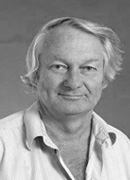Profile
-
OrganizationArizona State University
-
Telephone(480) 965-6486
-
Address(s)John Spence
Department of Physics
P.O. Box 871504
Tempe, AZ 85287-1504
-
Biography
John Spence, FRS, is Richard Snell Professor of Physics at Arizona State University, where he teaches graduate condensed matter physics, and is Director of Science for the National Science Foundation’s BioXFEL Science and Technology Center. Dr. Spence completed a Ph.D., in Physics at Melbourne University in 1972, followed by post doctorate training at Oxford University (UK). He is a Fellow of the American Association for the Advancement of Science, the American Physical Society, the Microscopy Society of America, the Institute of Physics (UK), and of Churchill College Cambridge, UK. He received the MSA Distinguished Scientist Award for 2006, the Buerger Award of the American Crystallographic Society in 2012 and the Cowley award of the International Electron Microscopy Society in 2014. A Festschrift of his work appeared in 2011. At Arizona State, the Spence Group undertakes experiments in condensed matter, biophysics and diffraction physics based around the use of electron and X-ray beams for imaging, spectroscopy and diffraction. This includes the use of the facilities of the Cowley Electron Microscope Center; together with new instruments they have built or modified themselves. Their quantitative convergent beam (QCBED) research allows them to directly image the chemical bonds which bind atoms together in solids. The lab is also involved at Lawrence Berkeley Laboratory in research focusing on lensless X-ray imaging methods. Dr. Spence’s recent research is devoted to biological applications of femtosecond X-ray diffraction at the Linac Coherent Light Source at Stanford, the world’s first hard X-ray laser. Here they use X-ray pulses so brief that they terminate before atoms move (in order to avoid damage), to determine the structure of membrane proteins and viruses which are difficult to crystallize, in their native environment. As Director of Science for the BioXFEL Center, Dr. Spence supports and assists the research undertaken by the seven contributing campuses and their external collaborators. His aim is also to bring the use of X-ray lasers to the attention of all US biologists who can benefit from their use in structural and time-resolved biological imaging. The Spence and Weierstall labs at ASU develop sample-delivery devices for structural and dynamic biology at hard X-ray free-electron lasers around the world. (The first such device was developed in their labs.) These include the delivery of hydrated streams of membrane proteins nanocrystals, soluble protein nanocrystals, single particles (with one particle, such as a virus, per shot), 2D crystals, and pump-probe facilities for time-resolved nanocrystallography and solution scattering. Secondly, Dr. Spence’s lab has an active program in the development of new data analysis methods and algorithms for snap-shot X-ray diffraction data, protein nanocrystals, single-particles and for solution scattering experiments at XFELs. The Spence Lab also assists all Center members through the presence of experienced graduate students and post doctorates at their beam times.




